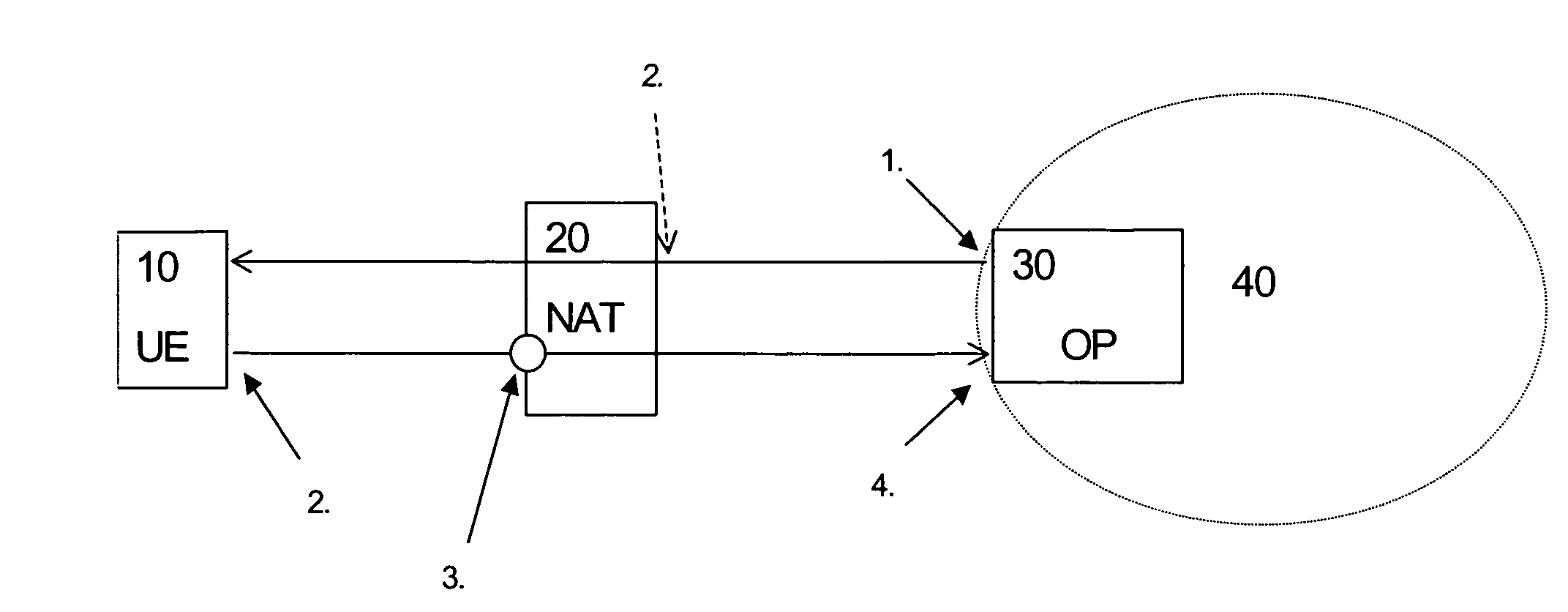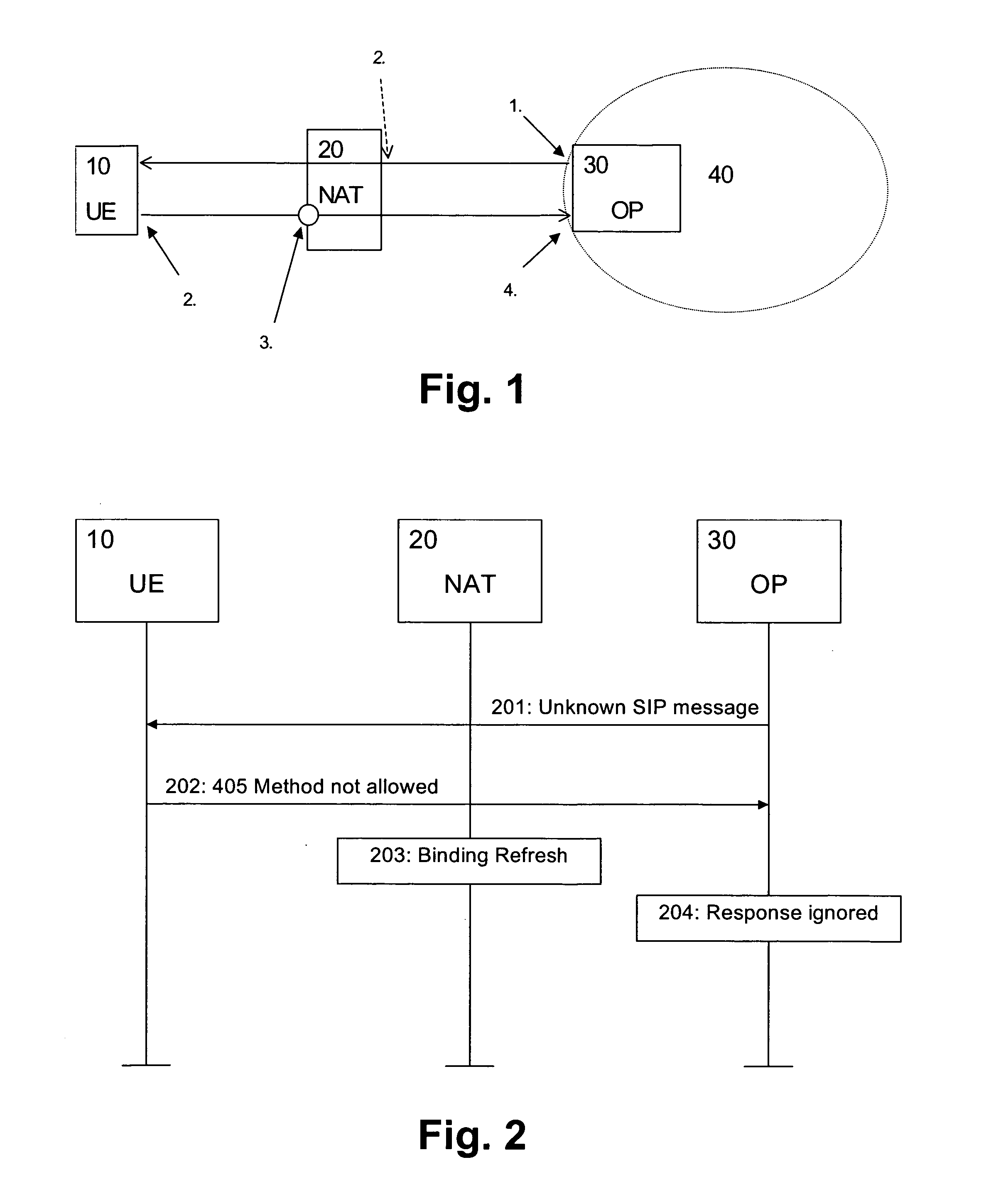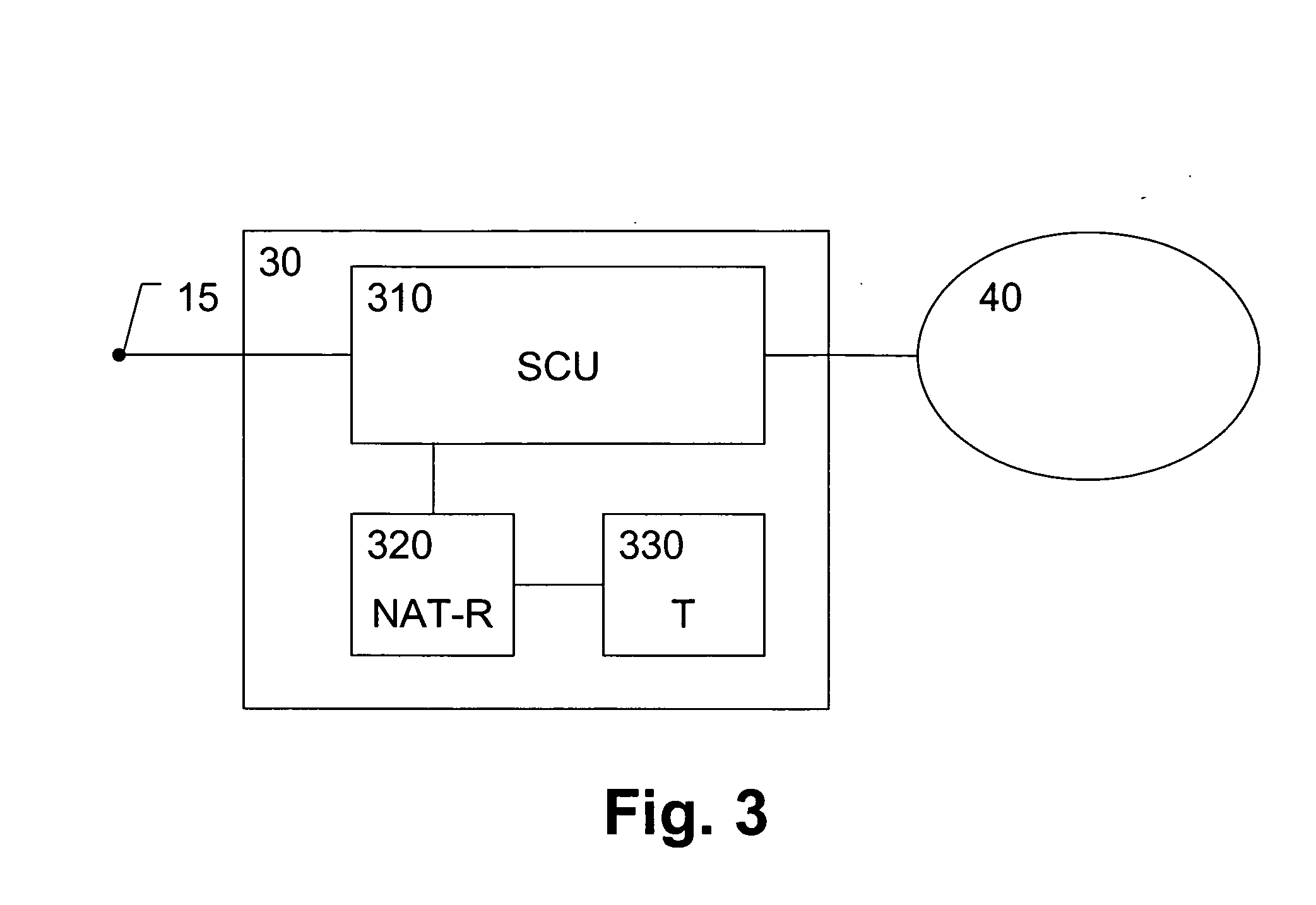Stimulation traffic for binding refreshment
a technology of stimulation traffic and binding refreshment, applied in the direction of digital computers, instruments, computing, etc., can solve the problems of not always convenient, nat devices that are out of control of the service, and use such a method lacks flexibility, and achieves low performance cost.
- Summary
- Abstract
- Description
- Claims
- Application Information
AI Technical Summary
Benefits of technology
Problems solved by technology
Method used
Image
Examples
Embodiment Construction
[0035] In the following, an embodiment will be described based on a network environment as shown in FIG. 1.
[0036] According to FIG. 1, a UE 10 provided in a first network, e.g. a private network or a radio access network with an own addressing function, is connected via a NAT functionality or device 20 and a SIP outbound proxy 30 to a second network 40, which may be a core network of a third generation mobile communication system.
[0037] In the present embodiment, address bindings at the NAT device 20 are maintained by using a dedicated signaling message which is unknown outside the outbound SIP proxy 30 for NAT binding refreshment purposes. I.e., the dedicated signaling message frequently triggers refresh operations at the NAT device 20.
[0038] The primary problem with SIP level NAT-binding refreshment is performance cost. Using conventional proxy-initiated known SIP methods like OPTIONS or NOTIFY for NAT refreshment leads to the problem that those methods can be sent as well by a...
PUM
 Login to View More
Login to View More Abstract
Description
Claims
Application Information
 Login to View More
Login to View More - R&D
- Intellectual Property
- Life Sciences
- Materials
- Tech Scout
- Unparalleled Data Quality
- Higher Quality Content
- 60% Fewer Hallucinations
Browse by: Latest US Patents, China's latest patents, Technical Efficacy Thesaurus, Application Domain, Technology Topic, Popular Technical Reports.
© 2025 PatSnap. All rights reserved.Legal|Privacy policy|Modern Slavery Act Transparency Statement|Sitemap|About US| Contact US: help@patsnap.com



